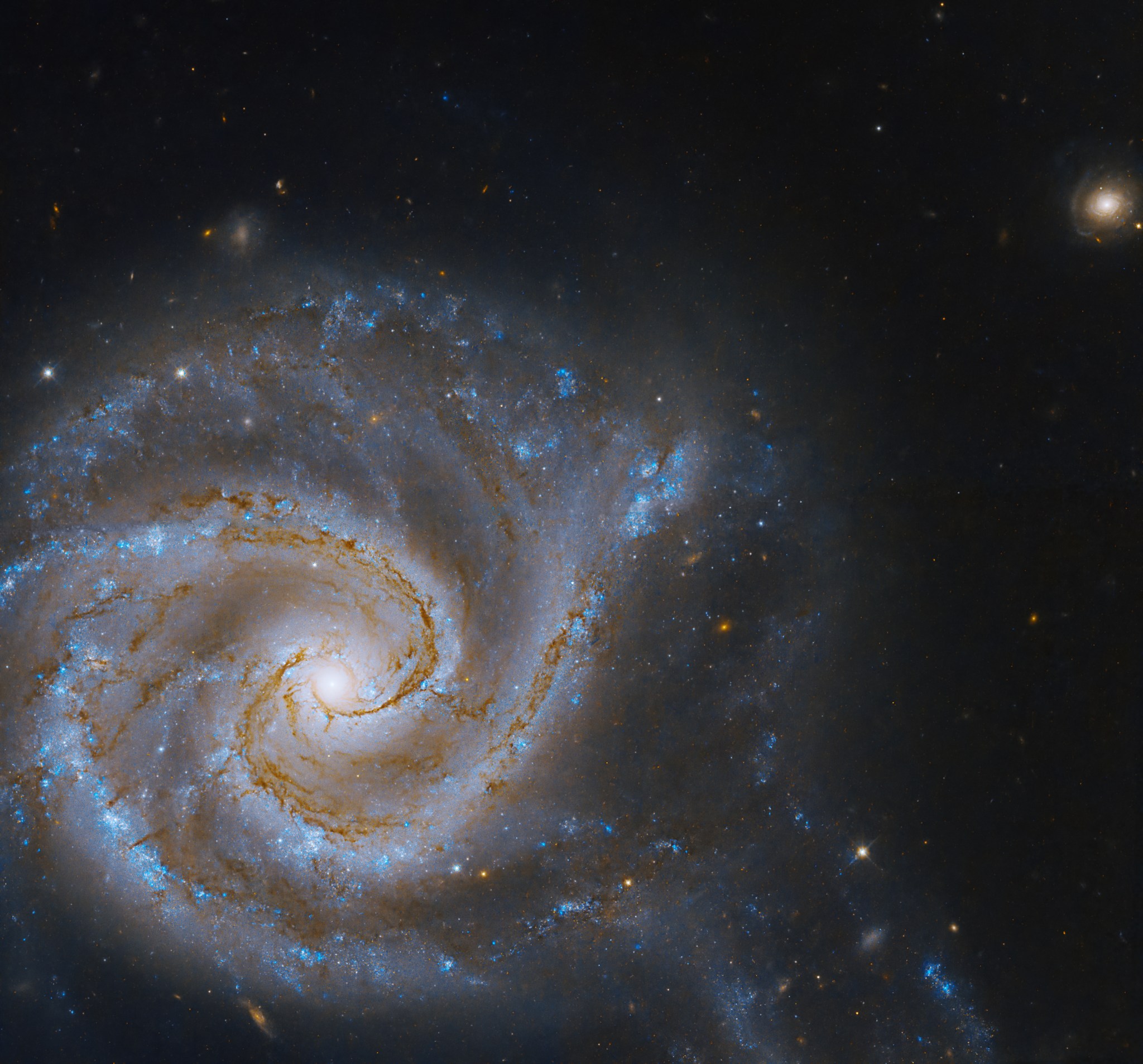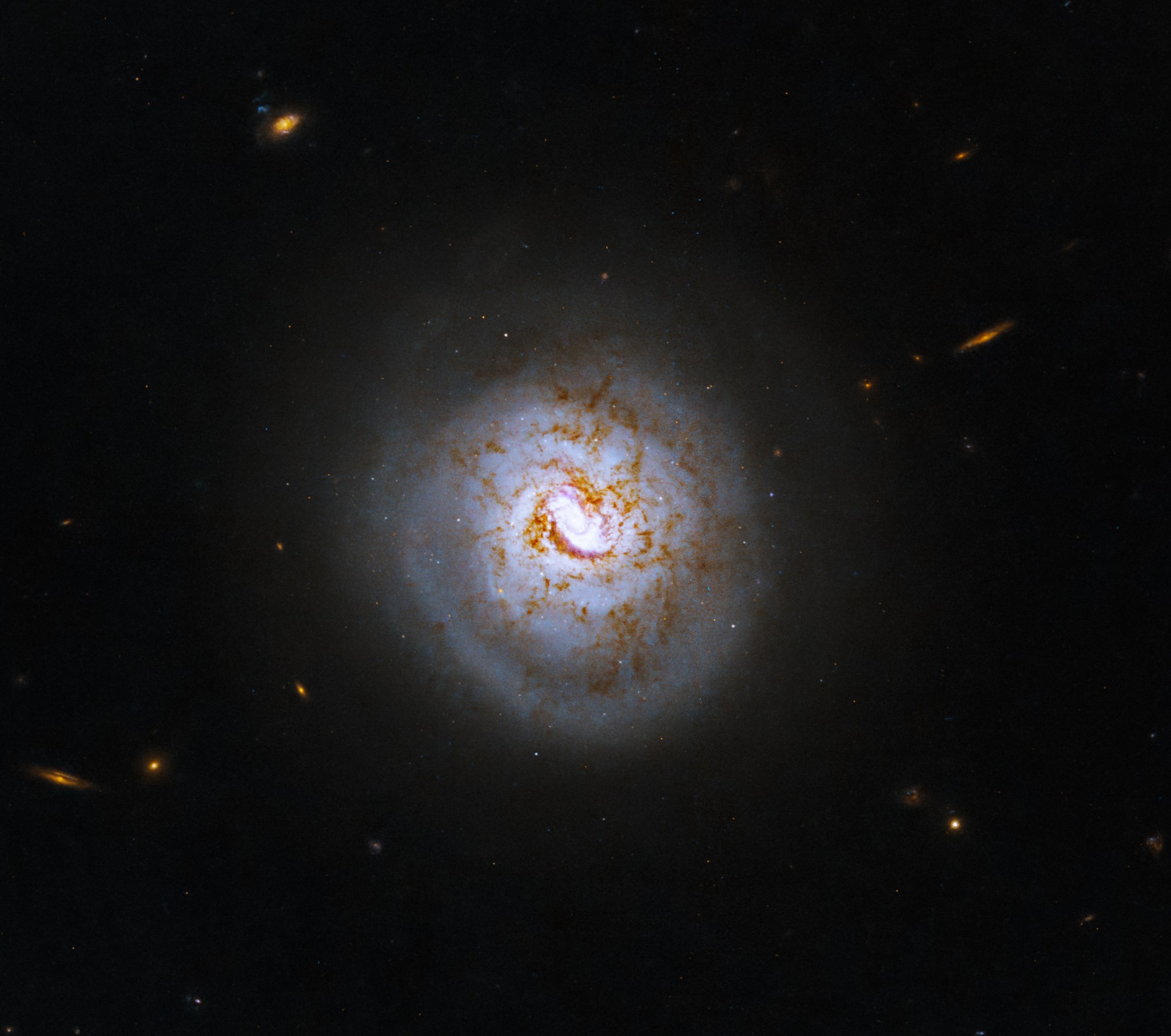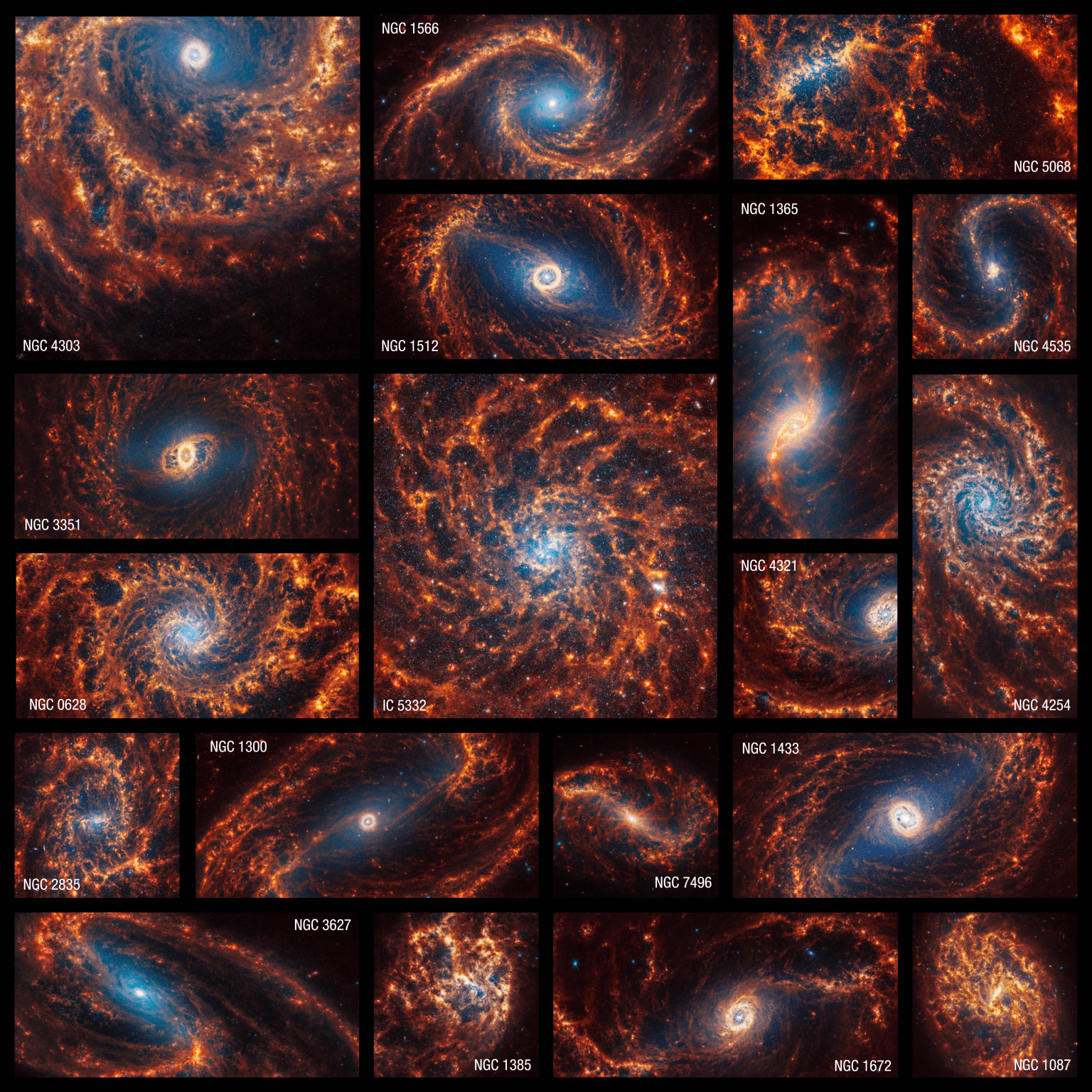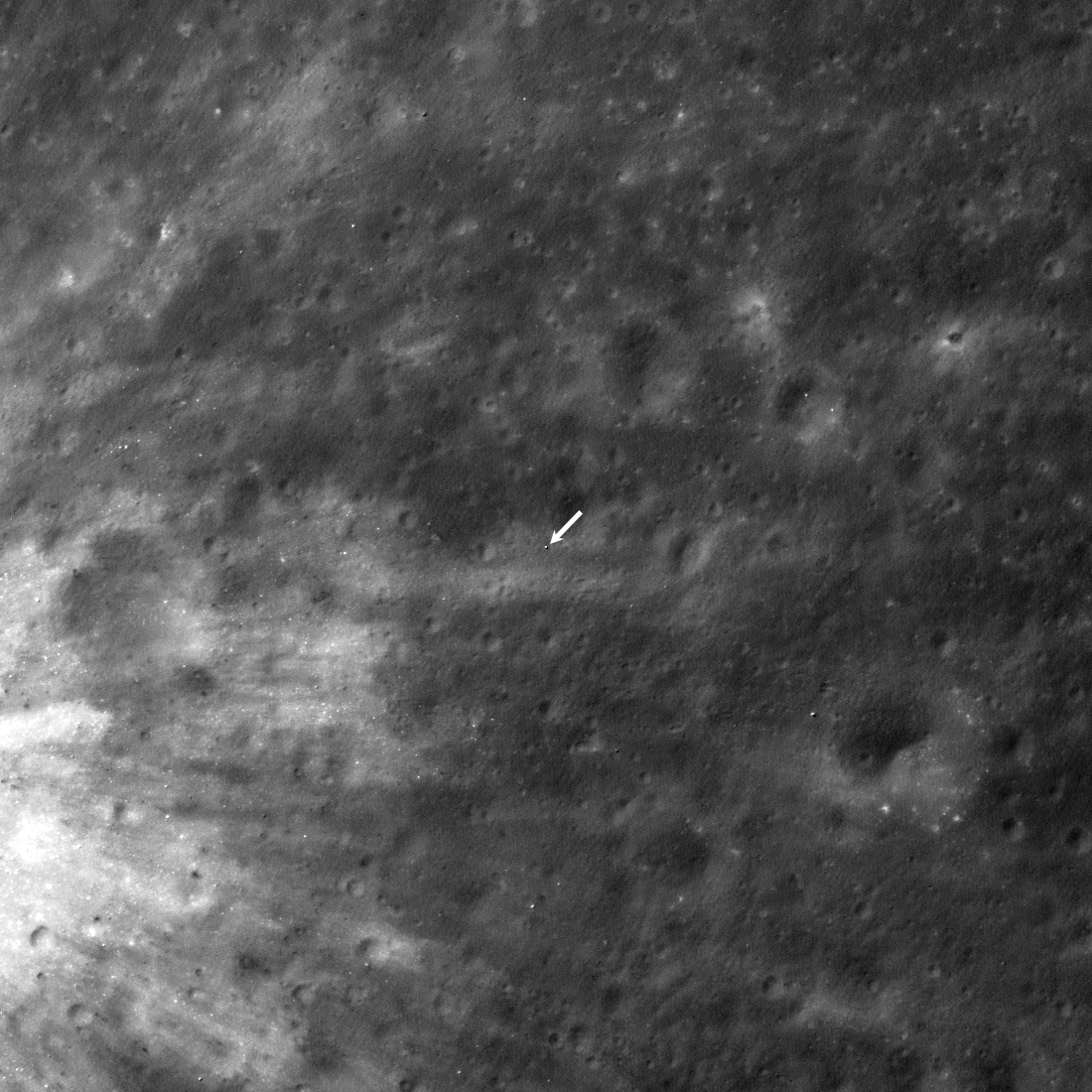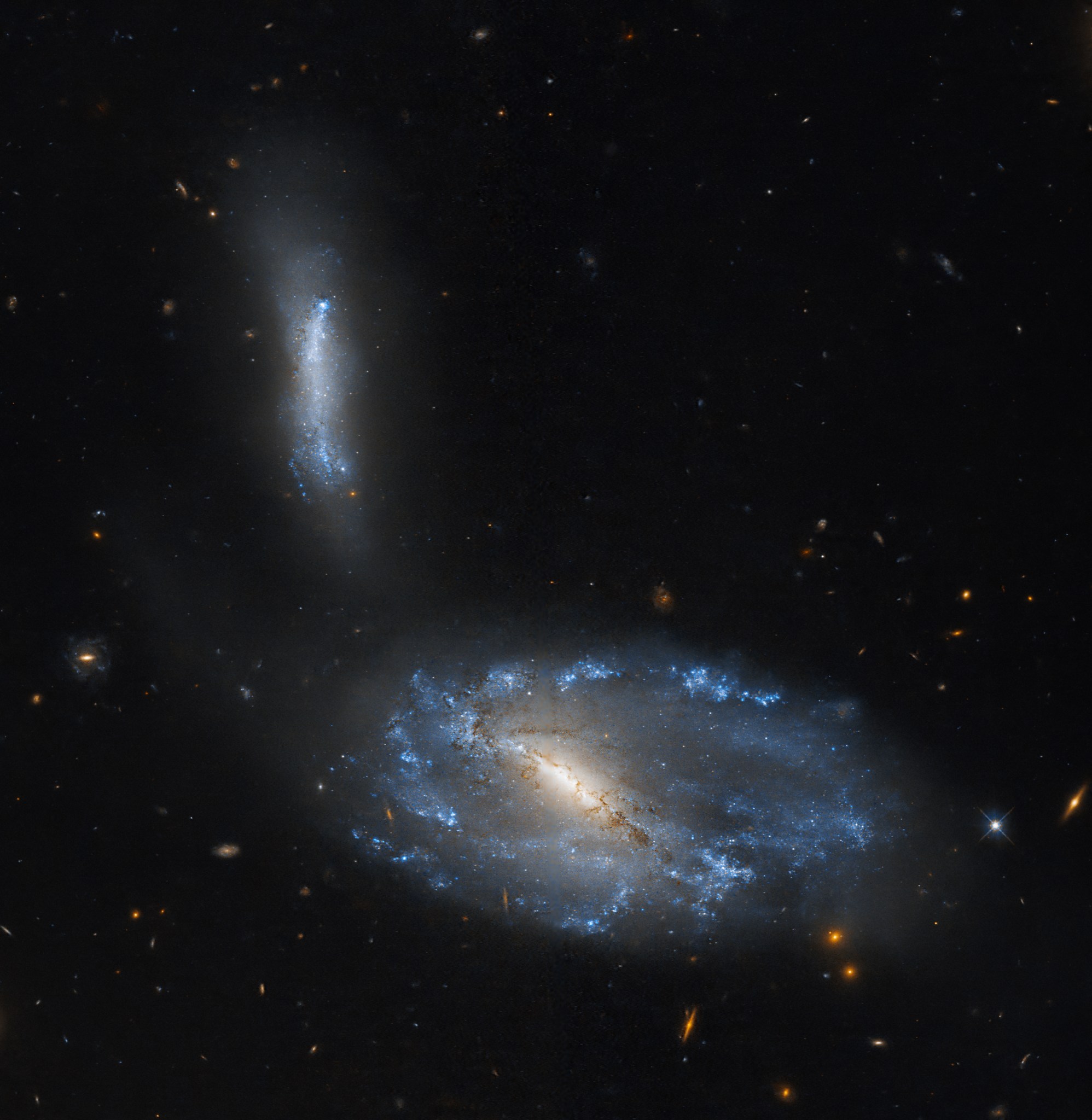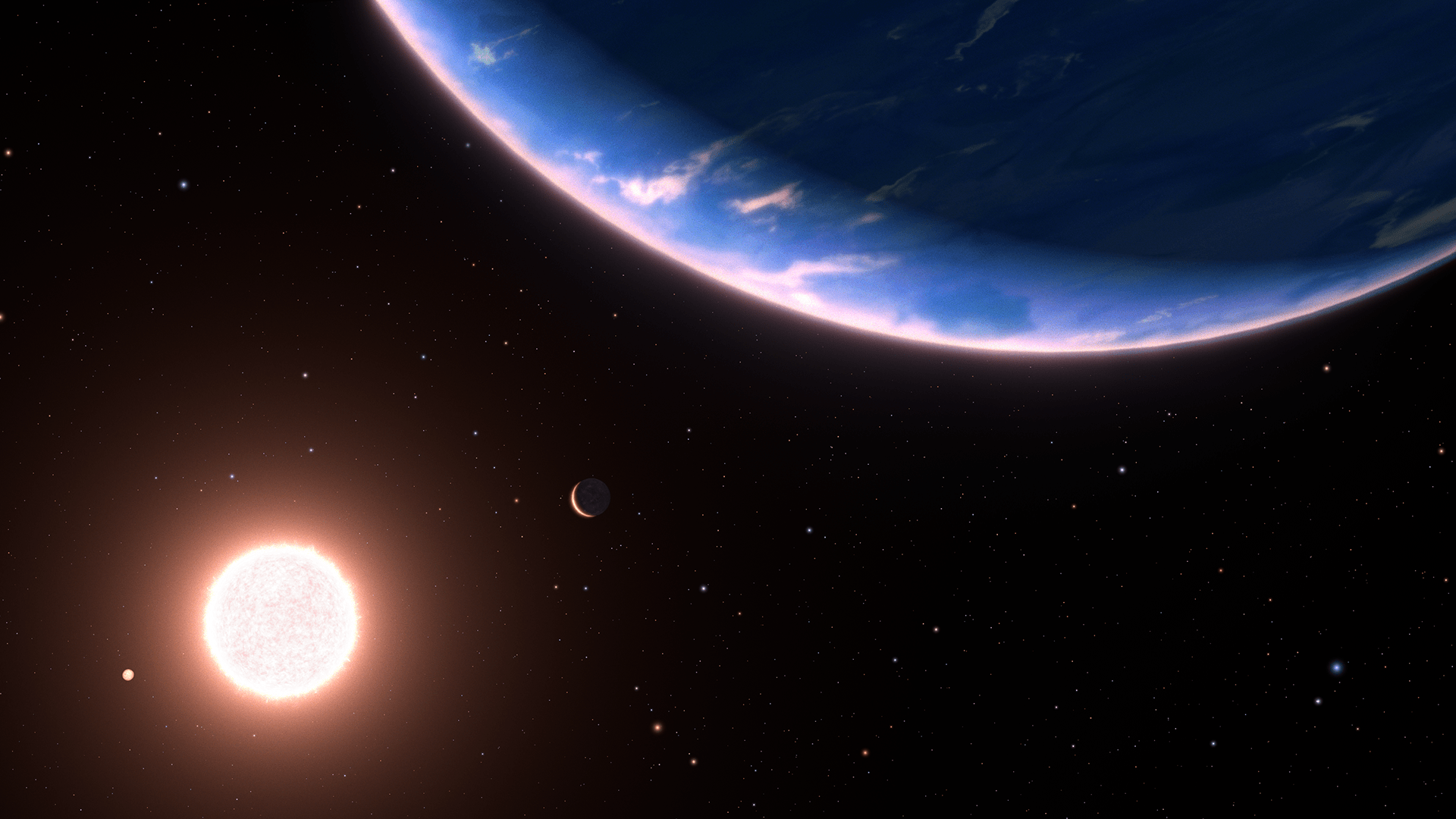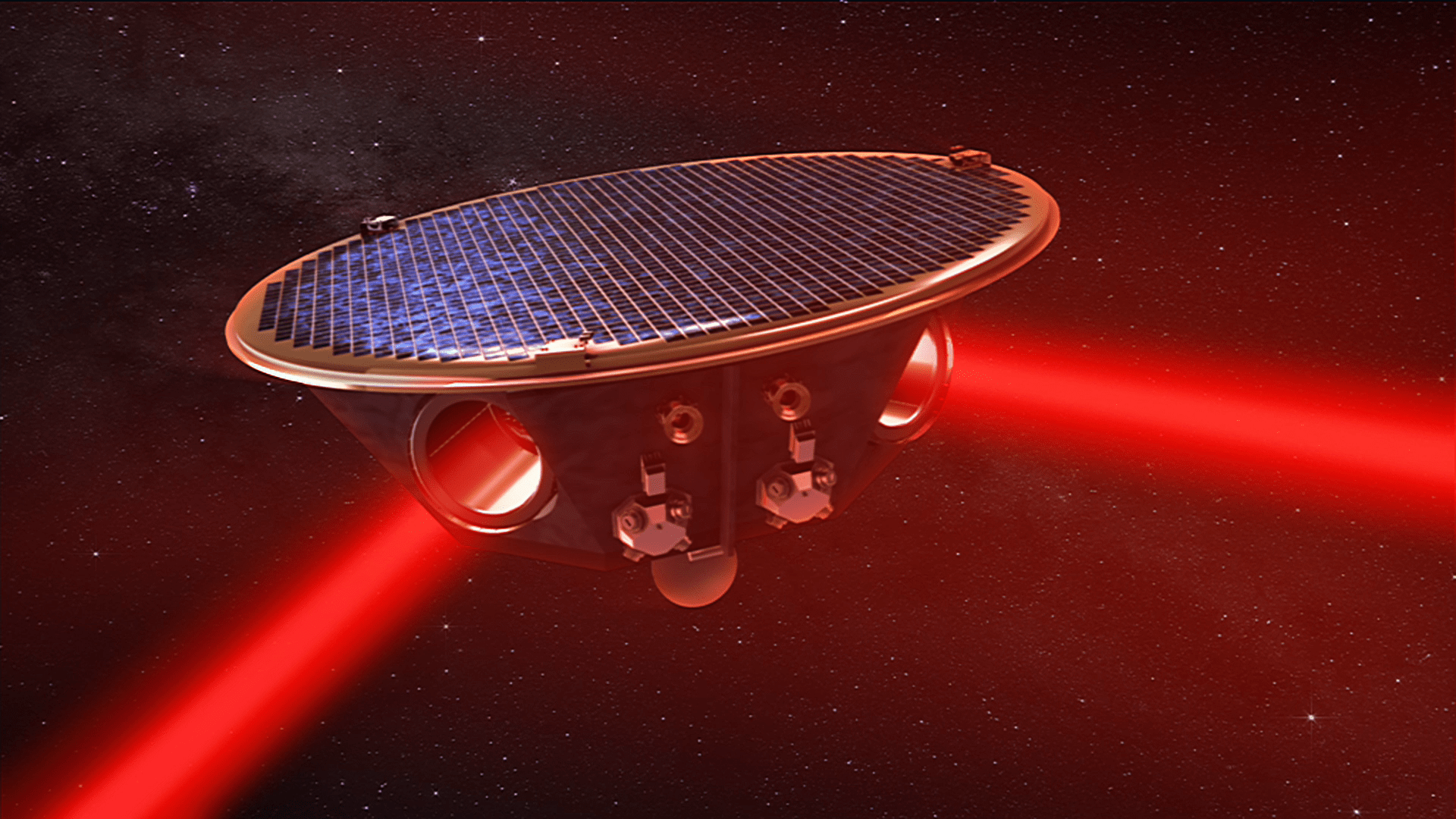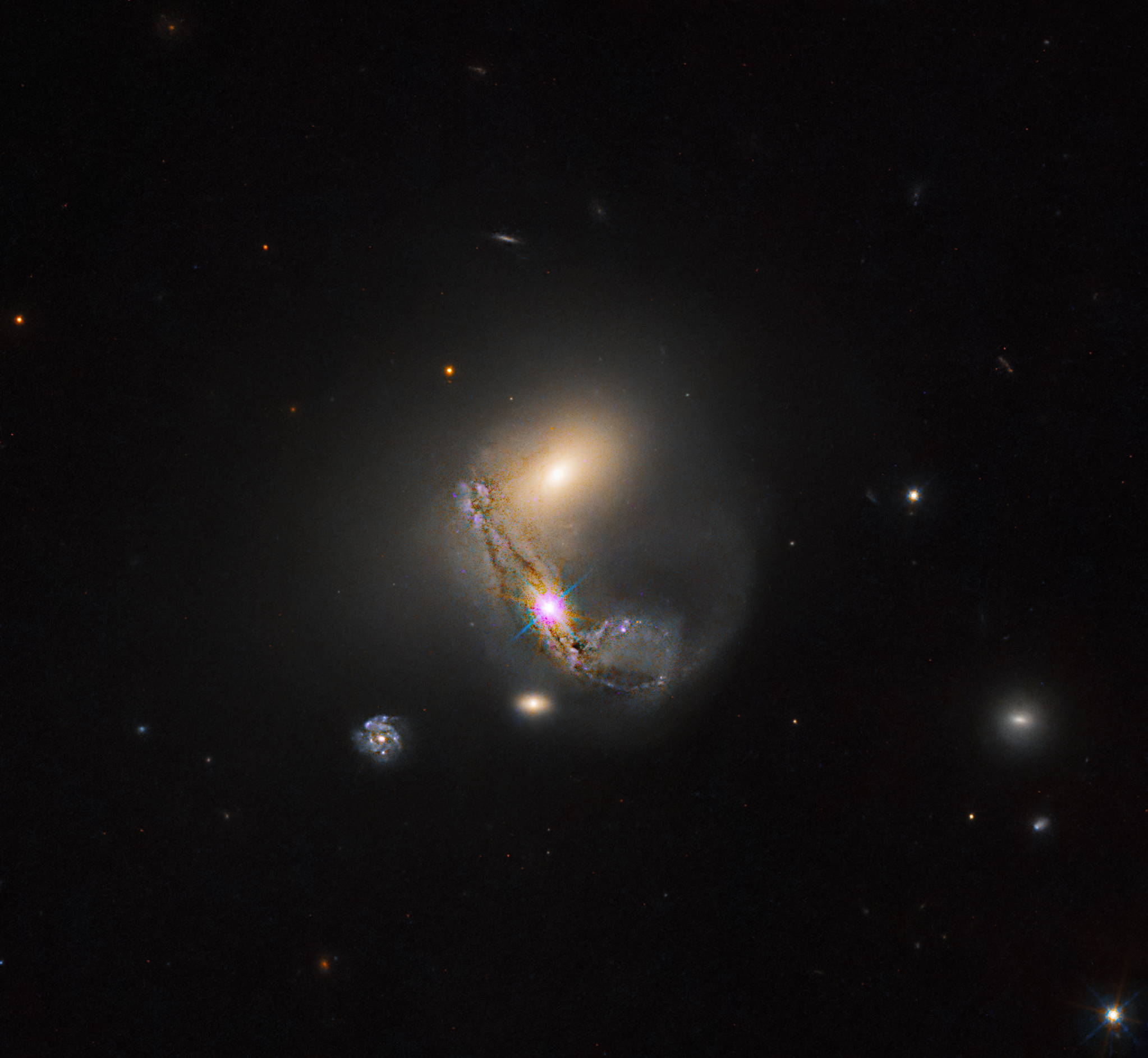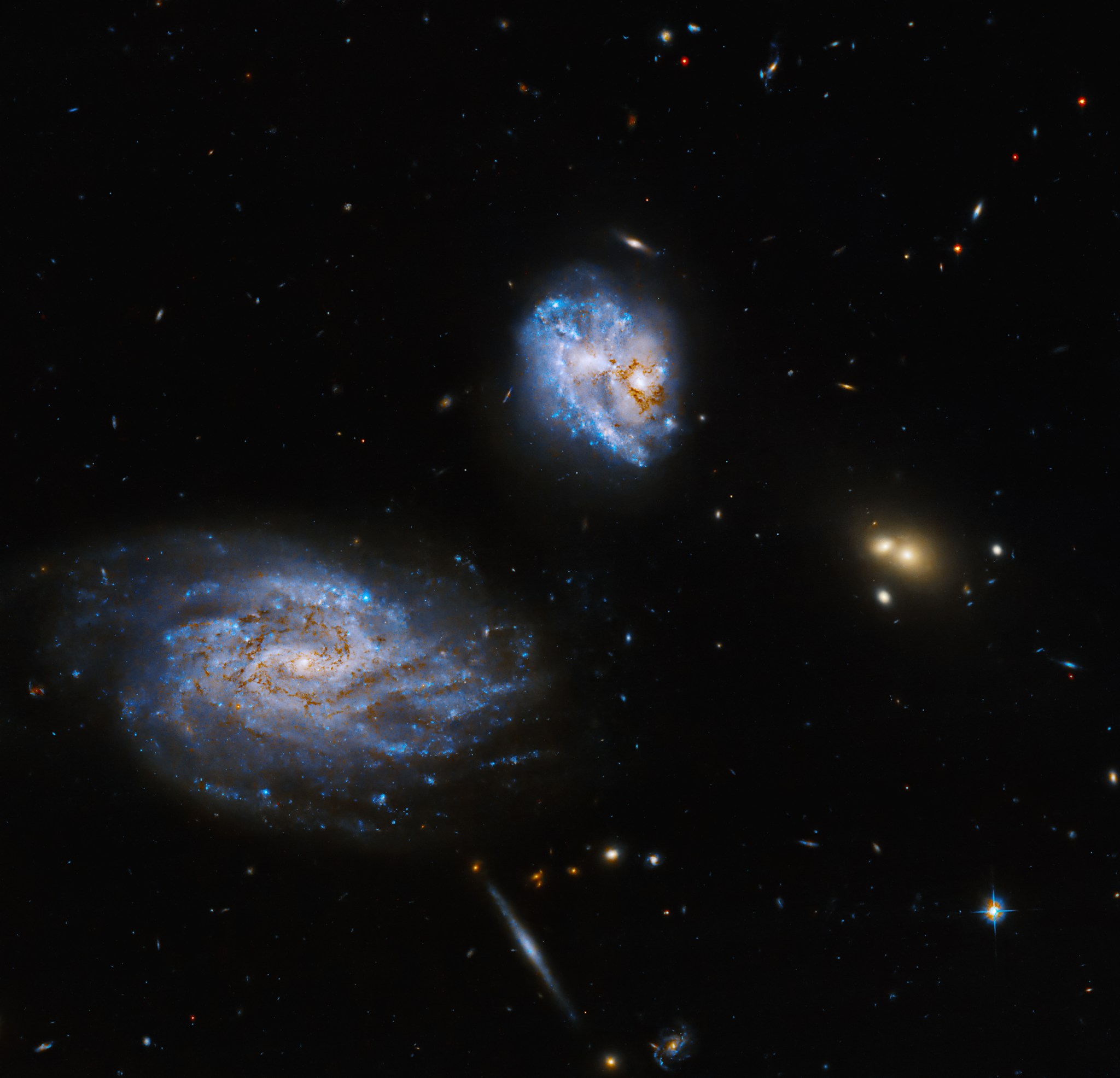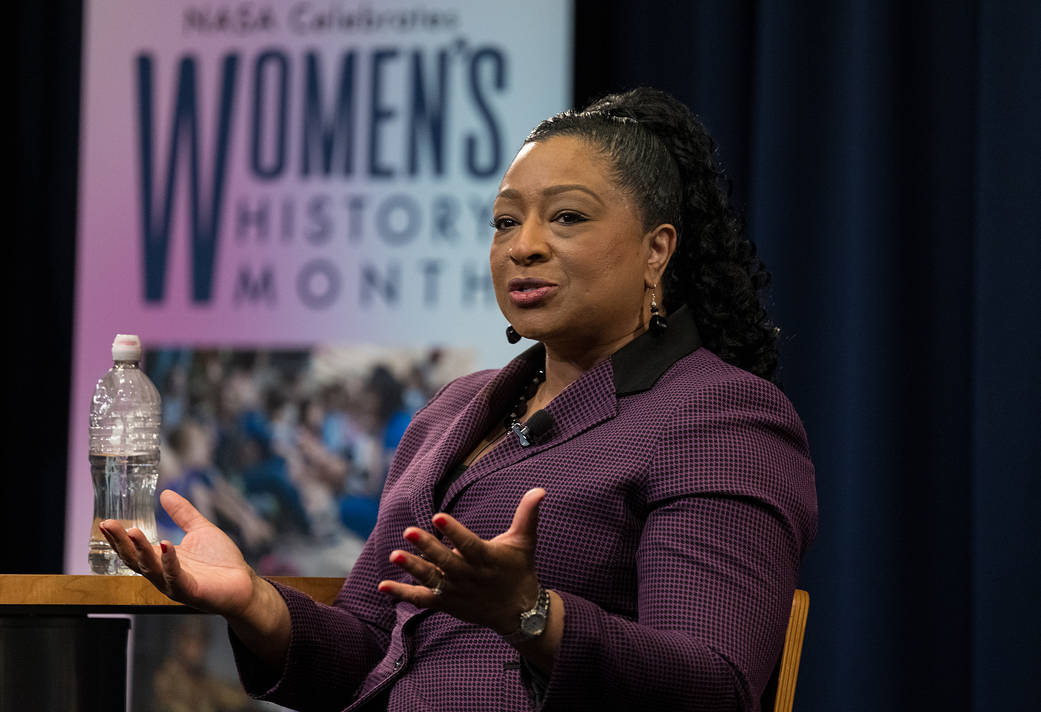1 min read Hubble Observes a Galactic Distortion The galaxy NGC 5427 shines in this new NASA Hubble Space Telescope image. NASA, ESA, and R. Foley (University of California – Santa Cruz); Processing: Gladys Kober (NASA/Catholic University of America) The galaxy NGC 5427 shines in this new NASA Hubble Space Telescope image. It’s part of the galaxy pair Arp 271, and its companion NGC 5426 is located below this galaxy and outside of this image’s frame. However, the effects of the pair’s gravitational attraction is visible in the galactic distortion…
Read MoreTag: Goddard Space Flight Center
Hubble Spies a Spinning Spiral
2 min read Hubble Spies a Spinning Spiral This new NASA Hubble Space Telescope image features the face-on spiral and Seyfert galaxy, ESO 420-G013. NASA/ESA/A. Evans (University of Virginia)/Processing: Gladys Kober (NASA/Catholic University of America) Looking like a baseball lobbed into the depths of the universe, ESO 420-G013 is a face-on spiral galaxy and a Seyfert galaxy. Dark lanes of dust are visible against the background glow of the galaxy’s many stars. About 10 percent of all the galaxies in the universe are thought to be Seyfert galaxies. They are…
Read MoreNASA’s Webb Depicts Staggering Structure in 19 Nearby Spiral Galaxies
6 Min Read NASA’s Webb Depicts Staggering Structure in 19 Nearby Spiral Galaxies Webb’s set of 19 PHANGS images of face-on spiral galaxies. Credits: NASA, ESA, CSA, STScI, Janice Lee (STScI), Thomas Williams (Oxford), and the PHANGS team It’s oh-so-easy to be absolutely mesmerized by these spiral galaxies. Follow their clearly defined arms, which are brimming with stars, to their centers, where there may be old star clusters and – sometimes – active supermassive black holes. Only NASA’s James Webb Space Telescope can deliver highly detailed scenes of nearby galaxies…
Read MoreNASA’s LRO Spots Japan’s Moon Lander
1 min read Preparations for Next Moonwalk Simulations Underway (and Underwater) On Jan. 19, 2024, at 10:20 a.m. EST, the JAXA (Japan Aerospace Exploration Agency) Smart Lander for Investigating Moon (SLIM) landed on the lunar surface. Five days later, NASA’s Lunar Reconnaissance Orbiter (LRO) spacecraft passed over the landing site and photographed SLIM. NASA’s Lunar Reconnaissance Orbiter captured this image of the JAXA (Japan Aerospace Exploration Agency) SLIM lander on the Moon’s surface on Jan. 24, 2024. SLIM landed at 13.3160 degrees south latitude, 25.2510 degrees east longitude, at an…
Read MoreHubble Studies a Sparkling Galaxy Pair
1 min read Hubble Studies a Sparkling Galaxy Pair This new NASA Hubble Space Telescope image features a pair of interacting galaxies called, NGC 5410 and UGC 8932/PGC 49896. NASA/ESA/D. Bowen (Princeton University)/Processing: Gladys Kober (NASA/Catholic University of America) A pair of small, interacting galaxies shine in this new NASA Hubble Space Telescope image. The larger of the two galaxies is named NGC 5410 and was discovered in 1787 by British astronomer William Herschel. It spans 80,000 light-years across and has a bright white bar of stars at its center.…
Read MoreNASA’s Hubble Finds Water Vapor in Small Exoplanet’s Atmosphere
5 min read NASA’s Hubble Finds Water Vapor in Small Exoplanet’s Atmosphere This is an artist’s concept of the exoplanet GJ 9827d, the smallest exoplanet where water vapor has been detected in the atmosphere. The planet could be an example of potential planets with water-rich atmospheres elsewhere in our galaxy. With only about twice Earth’s diameter, the planet orbits the red dwarf star GJ 9827. Two inner planets in the system are on the left. The background stars are plotted as they would be seen to the unaided eye looking…
Read MoreNASA Collaborating on European-led Gravitational Wave Observatory in Space
4 min read NASA Collaborating on European-led Gravitational Wave Observatory in Space The LISA (Laser Interferometer Space Antenna) mission, led by ESA (European Space Agency) with NASA contributions, will detect gravitational waves in space using three spacecraft, separated by more than a million miles, flying in a triangular formation. Lasers fired between the satellites, shown in this artist’s concept, will measure how gravitational waves alter their relative distances. AEI/MM/Exozet The first space-based observatory designed to detect gravitational waves has passed a major review and will proceed to the construction of…
Read MoreHubble Glimpses a Bright Galaxy Group
2 min read Hubble Glimpses a Bright Galaxy Group This new NASA Hubble Space Telescope image shows a tangled group of interacting galaxies called LEDA 60847. NASA/ESA/A. Barth (University of California – Irvine)/M. Koss (Eureka Scientific Inc.)/A. Robinson (Rochester Institute of Technology)/Processing: Gladys Kober (NASA/Catholic University of America) This new NASA Hubble Space Telescope image shows a group of interacting galaxies known as LEDA 60847. LEDA 60847 is classified as an active galactic nuclei, or AGN. An AGN has a supermassive black hole in the galaxy’s central region that is…
Read MoreHubble Observes an Askew Galaxy Coaxing Star Formation from its Partner
2 min read Hubble Observes an Askew Galaxy Coaxing Star Formation from its Partner This new NASA Hubble Space Telescope image features two interacting spiral galaxies collectively called Arp 300. NASA, ESA, J. Dalcanton (University of Washington), and R. Windhorst (Arizona State University); Processing: Gladys Kober (NASA/Catholic University of America) Arp 300 consists of two interacting galaxies, UGC 05028 (the smaller face-on spiral galaxy) and UGC 05029 (the larger face-on spiral). Likely due to its gravitational dance with its larger partner, UGC 05028 has an asymmetric, irregular structure, which is…
Read MoreNASA Goddard Experts to Take Part in February STEM Conference
3 min read Preparations for Next Moonwalk Simulations Underway (and Underwater) Alongside experts from academia and industry, leaders from NASA’s Goddard Space Flight Center in Greenbelt, Maryland, will be on hand at the Feb. 25–29 PowerSource Global Summit conference in Orlando. Dr. Christyl Johnson, Goddard’s deputy center director for technology and research investments, will deliver the conference’s keynote address on Feb. 26, sharing insights on space exploration developments as they relate to the 2024 summit’s theme: “Women in STEAM Powering the Metaverse.” “STEAM” adds “arts” to the “STEM” science, technology,…
Read More